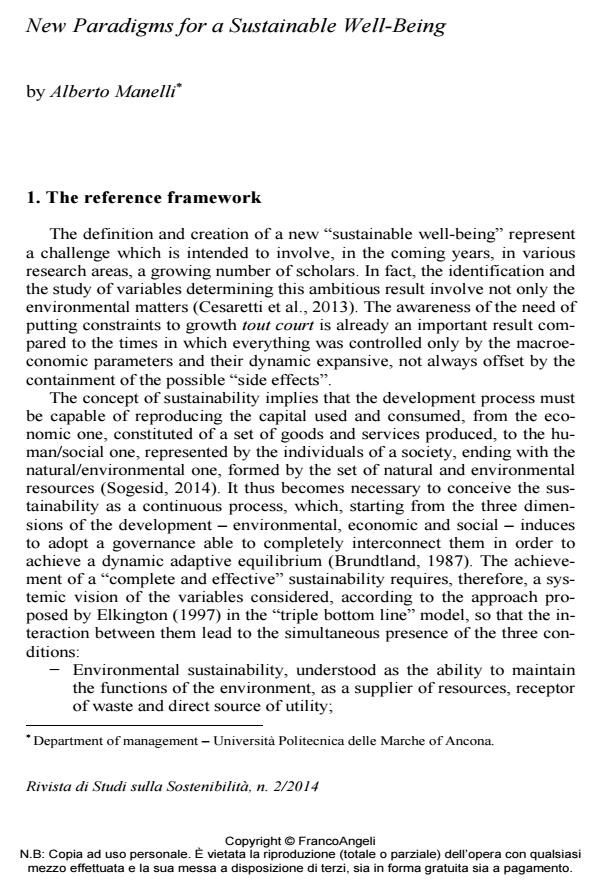New Paradigms for a Sustainable Well-Being
Journal title RIVISTA DI STUDI SULLA SOSTENIBILITA'
Author/s Alberto Manelli
Publishing Year 2014 Issue 2014/2
Language English Pages 20 P. 11-30 File size 202 KB
DOI 10.3280/RISS2014-002002
DOI is like a bar code for intellectual property: to have more infomation
click here
Below, you can see the article first page
If you want to buy this article in PDF format, you can do it, following the instructions to buy download credits

FrancoAngeli is member of Publishers International Linking Association, Inc (PILA), a not-for-profit association which run the CrossRef service enabling links to and from online scholarly content.
The achievement of the "food safety" is strictly linked to the enterprises and their production capacity. But it is equally important for the achievement of a new sustainability the role played by the markets - financials and commodities ones -, as well as by their operators, particularly to commercial, financial and credit intermediaries. The "farm crisis" is based , therefore, on effectively agricultural and environmental, but also economic and markets questions. The present work aims to represent an attempt to extend the scientific research on new paradigms of sustainable well-being to variables since here, at least in part, neglected, or still considered prejudicially harmful, with respect to environmental issues. Thus, it seeks to investigate especially the economic dimension of sustainable well-being, with reference to the financial market and its rules, as well as to the foodstuffs market and the rules for the formation of the price of the latter.
Keywords: Paradigm, food security, sustainability of the wellbeing, community agricultural policy, sustainable finance, sustainable development
Alberto Manelli, New Paradigms for a Sustainable Well-Being in "RIVISTA DI STUDI SULLA SOSTENIBILITA'" 2/2014, pp 11-30, DOI: 10.3280/RISS2014-002002